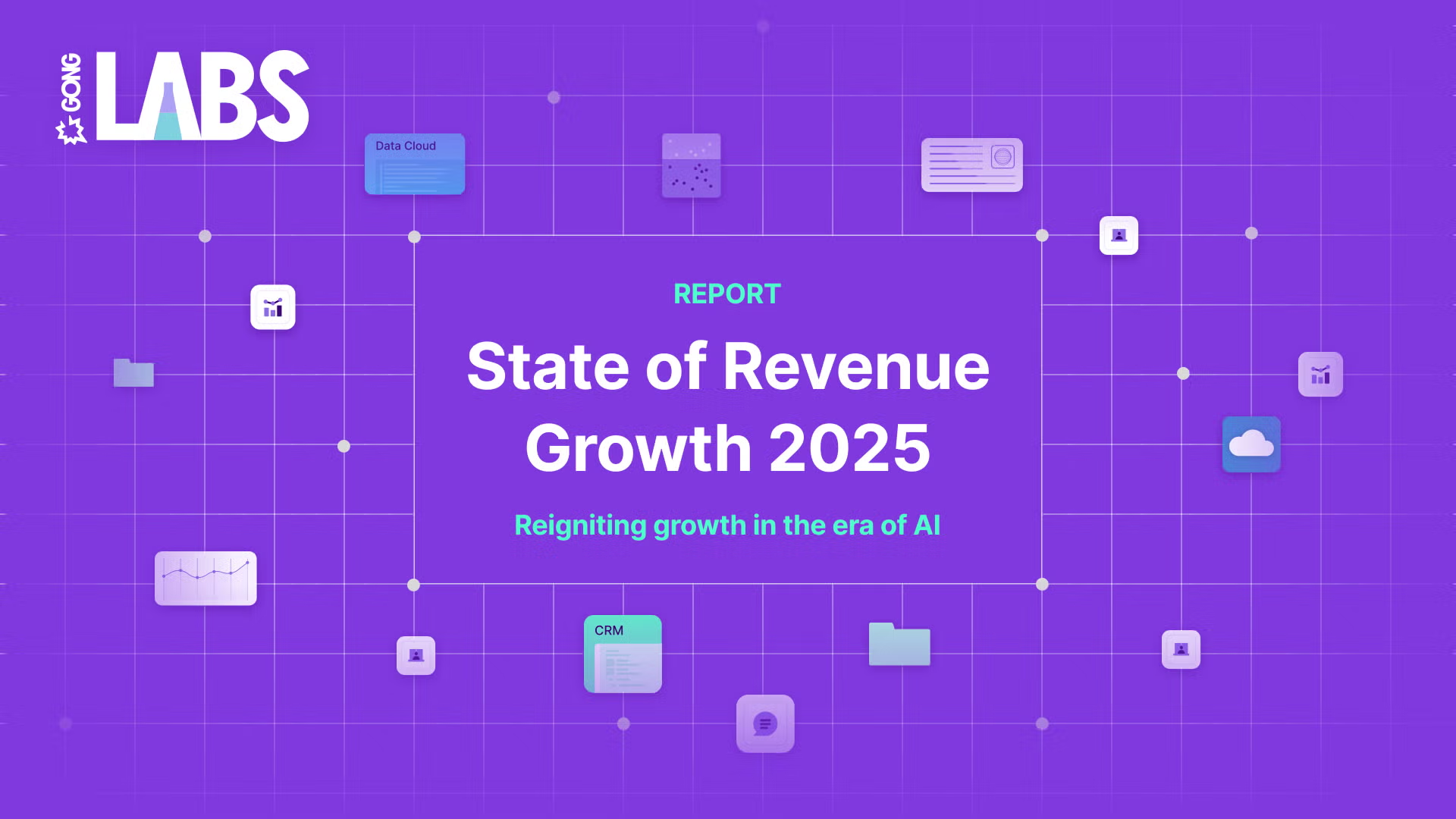Sales strategies
Sales performance: 19 ways to measure and boost it

Dan Morgese
Director, Content Strategy and Research at Gong
Published on: July 11, 2024

Are you at risk of letting your team’s sales performance stagnate?
When 9 in 10 sales leaders say they are failing to hit sales quotas in 2024, you need to keep a close eye on individual and team sales performance to avoid succumbing to the same fate.
Doing so makes it easy to see which part of your sales process reps are struggling with and how you can tweak your strategy to improve their performance and smash your sales goals.
But what should you track, and how should you use that information to improve your processes? Below, we reveal all.
What is sales performance?
Sales performance is a measure of an individual rep’s efficiency and efficacy. It assesses how well each rep turns prospects into customers and meets their targets. You can also measure the sales performance of your wider sales team to understand the extent to which they meet departmental goals and revenue targets.
Most leaders measure sales performance over a specific time frame, typically a month, quarter, or year. The exact time frames you select will depend on the measurements you track — something we’ll discuss in more detail below.
There are plenty of reasons to measure sales performance. First and foremost, sales performance metrics help you and your team track success. They provide clear indicators of whether or not reps are hitting quotas and targets.
As a result, sales performance metrics also promote accountability. When everyone can see their progress in black and white, there’s little argument to be made against improving the numbers. What gets measured gets managed, after all.
Finally, measuring sales performance helps sales managers make data-informed decisions, such as setting achievable targets and improving parts of the sales process.
How do you measure sales performance?
Sales performance metrics measure individual and team sales performance, allowing you to monitor and track improvements.
You can use dozens of metrics to measure sales performance, and the more metrics you track, the more detailed your view of individual and team performance will become.
Below, we list nine of the most important metrics you can track. Use them as a jumping-off point, and customize them to your organization and its goals.
Average deal size
Average deal size is the average value of each deal your team closes. So, if you have deals worth $15,000, $13,000 and $20,000, your average deal size is $16,000.
You can calculate the average deal size for individual reps or your entire sales team.
Average deal size is an important metric for your forecasts as it helps you estimate how many deals you’ll need to close to reach your target.
It can also highlight issues with your team’s lead quality. For example, if your average deal size trends up, the quality of your leads may have improved, while if it trends down, the quality may have dropped.
Sales cycle length
Your sales cycle length is the average time it takes individuals or teams to move a deal from initial contact to close. You can measure sales cycle length in days or months by dividing the total number of days all deals are open by the total number of closed deals.
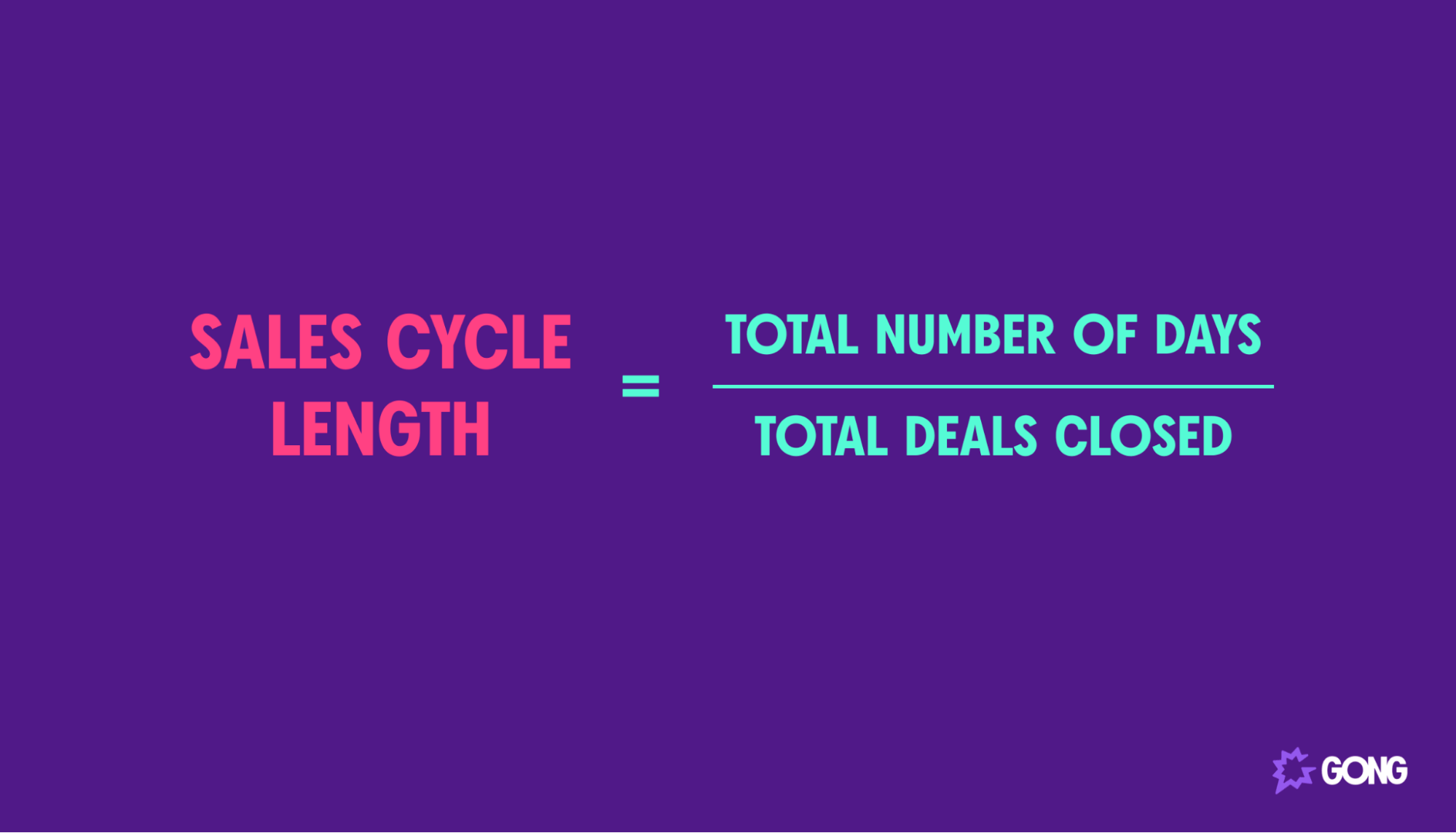
So if a rep closed five deals in 29 days, 35 days, 40 days, 20 days, and 16 days, respectively, their average sales cycle length would be 140/5 = 28 days.
Sales cycle length can differ massively depending on your industry and the types of products you sell. SaaS sales cycles tend to be relatively short, for example, while enterprise software sales cycles are much longer due to the deal size and the number of people involved.
Sales cycles should always be as short as possible. The shorter the sales cycle, the more sales your reps can close, and the easier it is to focus on growth.
Number of calls made
Also known as call volume or contact volume, the number of calls made is a fairly self-explanatory metric: it’s the total number of calls each rep makes over a defined time period.
This productivity metric is worth tracking because often, the more calls a rep makes, the more opportunities they create. Sales is still a numbers game in many respects — especially if your team is cold calling prospects. While it helps to have an impressive prospect list and a reliable sales pitch, you’ll still hearnofar more often thanyes, andthat means reps need to pick up the phone.
Number of meetings booked
This metric is simply the number of meetings a rep books over a given period.
Use this metric along with calls made to calculate your rep’s sales productivity, which is the number of meetings booked divided by the number of calls made, multiplied by 100. If a rep books 10 meetings after making 100 calls, their sales productivity rate is 10%.
This can indicate whether your reps are having meaningful conversations when they pick up the phone or need to adjust their talk tracks.
Number of opportunities
A final, self-explanatory metric, the “number of opportunities,” is the number each rep works on.
Tracking each rep’s number of opportunities helps you determine the health of their pipeline. If you want to dig deeper, you can break down opportunities by pipeline stage.
Ideally, you’ll see roughly the same number of opportunities in each stage of the pipeline, from qualification to negotiation.
A pipeline that’s front-loaded with opportunities suggests that a rep is struggling to move opportunities forward after bringing them into the funnel. On the other hand, if the pipeline is back-loaded with opportunities, the rep may be neglecting their prospecting responsibilities.
Lead-to-opportunity conversion rate
Your lead-to-opportunity conversion rate is the percentage of prospects that become qualified opportunities.
Calculate your lead-to-opportunity conversion rate by dividing the total number of opportunities by the total number of leads and multiplying by 100.
So if your rep turns 100 leads into 20 opportunities, they have a lead-to-opportunity conversion rate of 20%.
This metric helps you determine reps’ proficiency at turning leads into opportunities, as well as the quality of those leads since higher-quality leads are easier to convert.
Win rate
Win rate is the ratio of closed deals compared to the total number of deals won or lost. So, if a rep closes five deals out of 20, they have a win ratio of 25%.
Win rates provide insight into your sales strategy and indicate whether you’re targeting the right buyers. If you are, your team should have a relatively high win rate. If your win rate is falling, however, there could be a problem with the quality of your prospects or the ability of your reps to navigate negotiations and get buyers to put pen to paper.

You can explore this metric further by segmenting it by industry or product. For example, if you have a high win rate with one product but not another, the one that’s struggling may suffer from poor product-market fit.
Quota attainment
Quota attainment is an individual measure of sales performance — the percentage of sales each rep closes against their quota over a given period.
If a rep closes $150,000 in deals and their quota is $200,000, they have a quota attainment of 75%.
You can use quota attainment to identify high and low performers, see if you need to adjust sales processes, and check the attainability of your sales targets. If everyone on your team struggles to achieve quota, your expectations may have been unrealistic, or your market approach (and talk tracks) may not reflect what’s happening in the market.
Participation rate
Participation rate is the percentage of your sales reps who meet their targets. It’s a reliable way to measure your team’s performance and check whether the quotas you’ve set are too easy or difficult to achieve, or just right.
If 16 of your 20 sales reps meet their monthly quota, you have a participation rate of 80%. That suggests your team is performing well.
Participation rates of less than 50% could signify coaching issues or an underlying problem with your sales process.
5 ways to improve individual sales performance
Now that you know how to measure sales performance, let’s look at five ways you can improve the performance of your individual sales reps.
Improve your employee onboarding
A lack of familiarity with your sales process may keep new sales reps from performing as expected. Luckily, you can fix this issue by improving your onboarding process.
A great sales onboarding process gives new hires all the information they need to sell effectively. This includes knowledge of the following:
- Your product(s)
- Your target market
- Your team’s sales methodology
- The buyer’s key pain points
- Common buyer objections and proven responses
Dedicate adequate time to training your new hires, then put them on the phones so they can put everything they’ve learned into practice as quickly as possible. Pair new hires with a top-performing rep to help them learn on the job — or better yet, provide your new hires with a library of successful sales calls they cal use for self-coaching. It should cover every stage of the sales process and include best-in-class call examples. Don’t forget to schedule regular check-ins to discuss your new hires’ performance and coach them on any challenges they’re having. (Ideally, you’ll know what these challenges are before your 1:1 coaching meetings.)
Train your sales staff
Ongoing sales training is pivotal to improving sales performance. Not only are top performers more likely to have the skills they need to succeed, but reps who get support from colleagues and managers are 20% more likely to hit targets.
The most effective sales coaching focuses on improving the performance of the bulk of your sales reps, who sit in the middle of the performance bell curve. They don’t overperform, nor do they underperform, but even a small improvement in their selling abilities could have amassiveimpact on your team’s overall performance.

You can achieve this improvement by addressing the individual needs of the reps in your new cohort. Book monthly coaching sessions (or more frequent ones) with each rep and use a sales coaching solution like Gong that gives you personalized and data-driven recommendations on how each rep can make improvements.
Don’t forget to coach your sales leaders too. It’s vital that anyone in your organization who provides sales training receives training themselves. Coaching isn’t an inherent skill — even if managers have previously held sales roles, they still need to learn how to coach other reps. Make sure your managers and reps all have access to a solution like Gong so they can access data about their performance as well as insights about areas for improvement.
Introduce automation
Did you know that reps spend just 28% of their time selling? Shocking, right? The good news is you can give your reps more time to sell by providing them with sales software that reduces or eliminates manual activities like data entry.
Take a solution like Gong, for example. Gong can automate your workflow by updating your CRM after every customer interaction, building automated outreach workflows, and providing contextually accurate AI guidance on the best next steps.
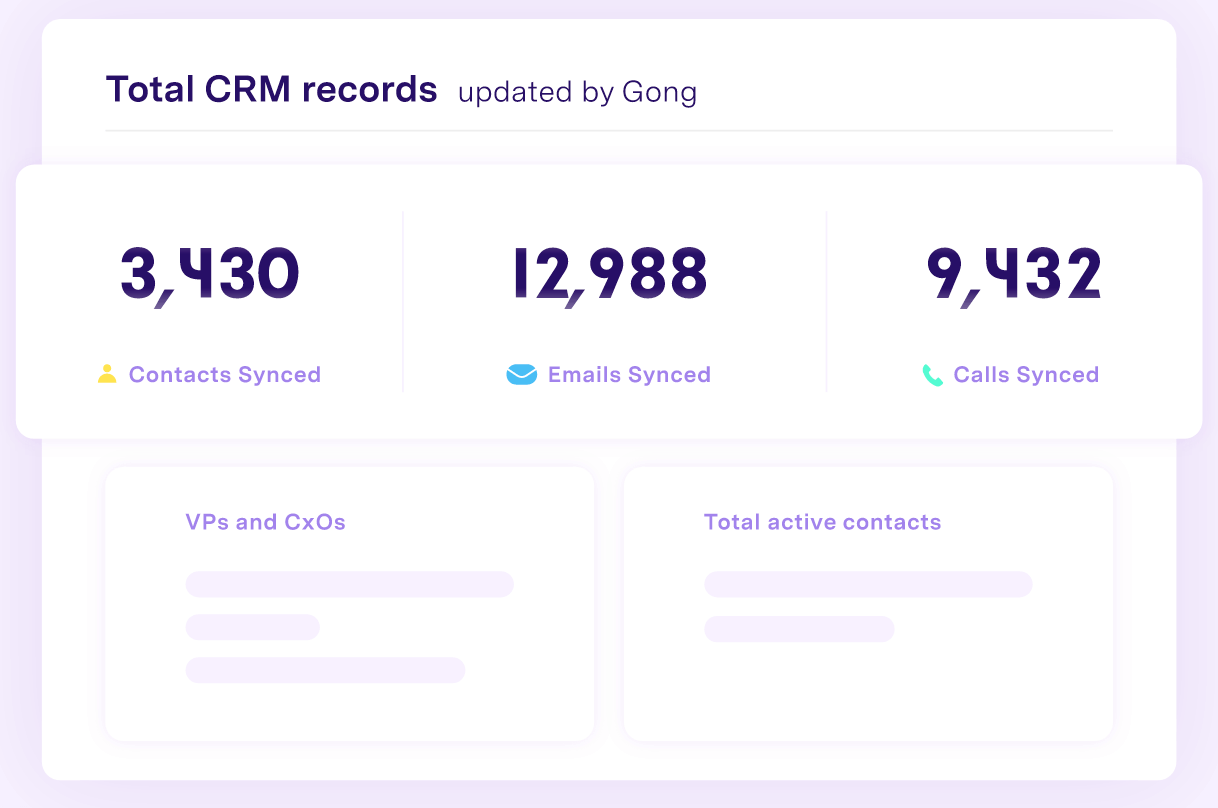
You can even use Gong’s generative AI to write sales emails in seconds. This type of automation will become much more common in the coming years, with Gartner predicting that 75% of B2B sales organizations will augment their traditional playbooks with AI-guided solutions by 2025. Keep your team ahead of the pack!
Set clear objectives
Every sales rep should have clear and realistic sales objectives . This isn’t the same as quota — it’s a target they should hit (like booking a certain number of weekly meetings). It should be an overarching goal they can aim for — like increasing the average deal size by 10% over the next quarter.
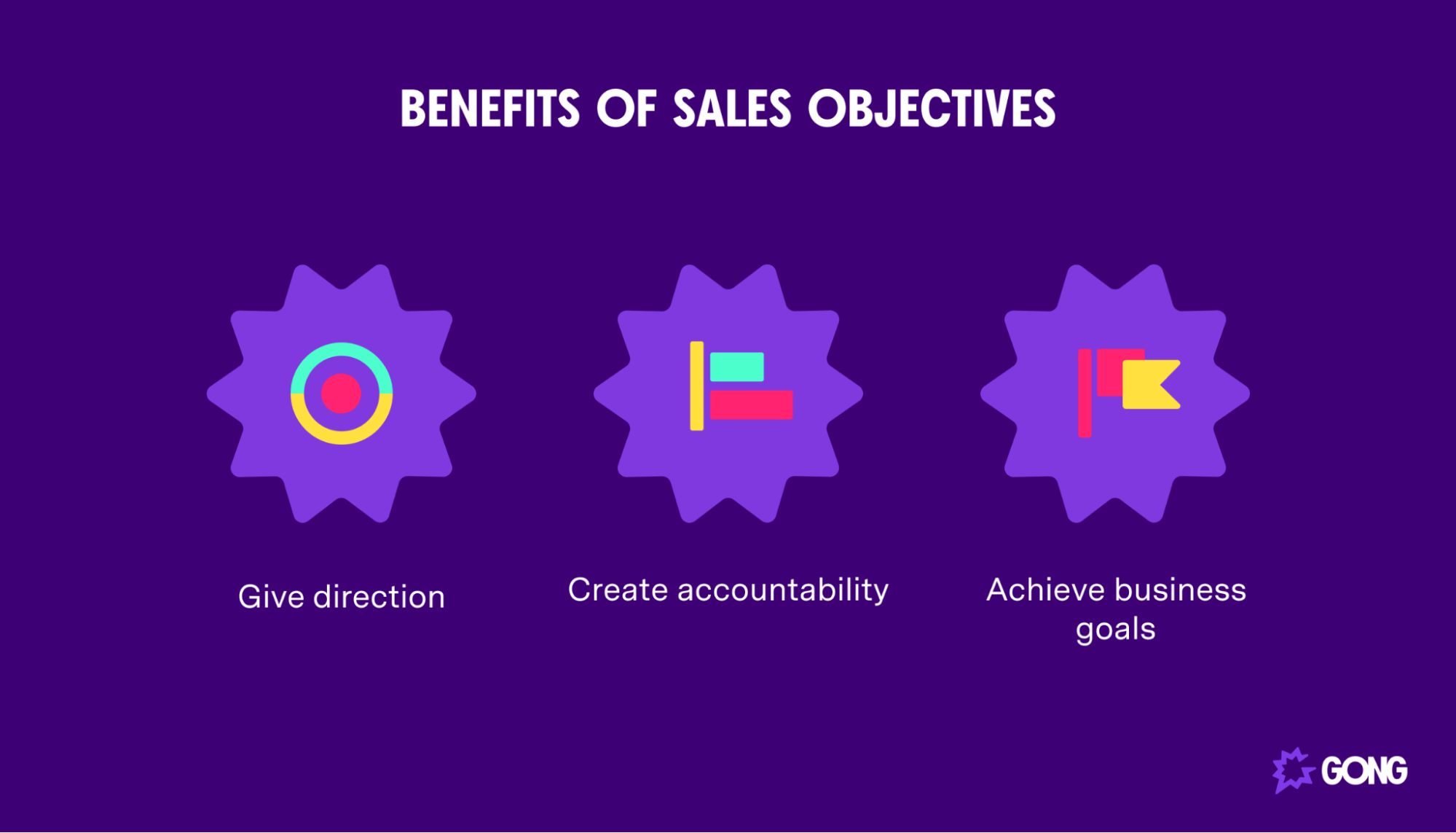
The right sales goals can give direction, create accountability, and boost performance. But to be effective, they also need to be SMART:
- Specific
- Measurable
- Attainable
- Relevant
- Time-bound
You can set more than one goal with a rep, depending on their coaching needs.. Consider, for example, combining short-term and long-term objectives that give sales reps something to aim for immediately while also ensuring that they have a bigger target set for the future.
Build enticing incentive programs
Money talks. The right compensation package incentivizes sales reps to improve their performance and exceed their goals.
There are plenty of commission structures to choose from, including:
- Base salary + commission
- Tiered commission
- Residual commission
- Multiplier commission
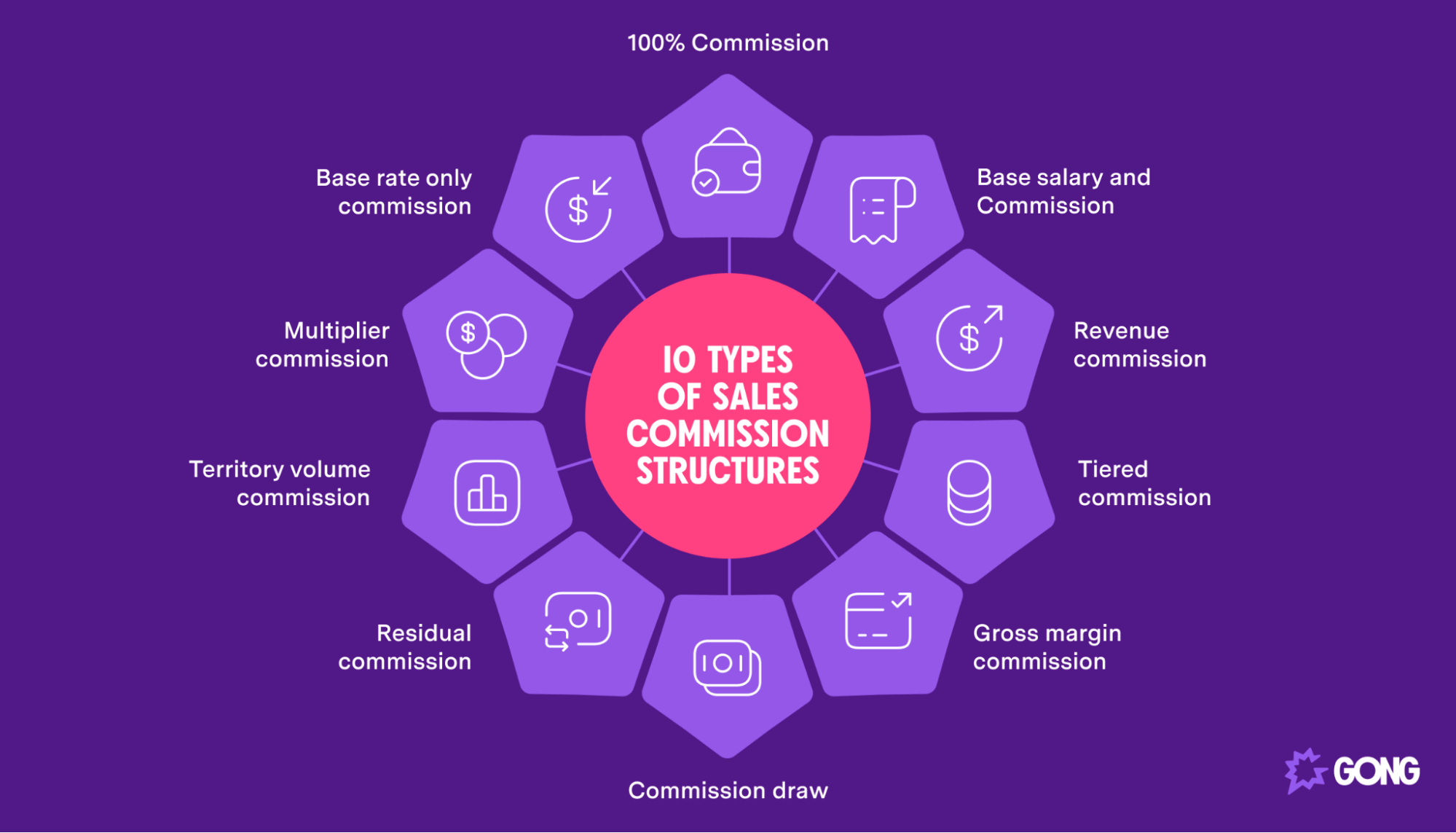
Some commission structures are more incentivizing than others. And, while a 100% commission structure mayseemlike the most incentivizing option, sales reps don’t tend to perform too well if their basic needs aren’t guaranteed to be covered.
That’s why a base salary plus a commission structure is the most popular option. Make sure your commission rates are enticing enough to encourage your reps to go the extra mile, and try to avoid capping commissions, if possible. Finally, make sure your incentive program aligns with your company’s goals.
Five ideas for improving sales team performance
Improving the performance of yourentiresales team requires a slightly different approach. Try implementing one or more of the strategies below:
Hire the right people
Your hiring strategy has a significant influence on your team’s performance. Hire seasoned salespeople, for example — the kind who can jump into a new role and start making sales almost immediately — should cause a jump in your sales performance. They may be a bit more expensive to hire, but they’ll hit quota faster and bring in more revenue over the long term.
If you can’t afford to do that, don’t worry. There are still plenty of other approaches you can take to improve your hiring. You don’t have to focus solely on hiring the people with the best sales records, you can also focus on those who are highly receptive to training. It’s no good hiring a grizzled sales veteran if they aren’t willing to learn your unique sales process.
While you should consider a sales rep’s previous performance, make sure they are a culture fit for your organization too. They should similar personality traits and attitudes with your existing team members and be keen to learn about your industry.
If in doubt, use our interview questions to find the best employees.
Foster a culture of teamwork, improvement, and accountability
Speaking of work-culture fit, you should aim to build a culture on your team that encourages reps to work together toward a common goal. If you can promote team selling, collaboration, and knowledge sharing, reps will naturally help each other hit their targets. If you do this well, you can also encourage your team to the load when it comes to coaching.
Ideally, this should happen naturally. One way to foster this culture is to involve your sales team in decision-making. Set goals and quotas with them, for example. The more you let them have their say, the more responsibility they’ll take for the results.
You can also gather and implement their feedback. Ask reps how quotas and incentive plans motivate them, and discuss alternatives that might be more incentivizing.
Adopt sales software
To improve your team’s performance, equip them with sales software that gives them the insight and knowledge they need to close more deals.
This is where Gong excels.
With Gong’s Revenue Intelligence Platform, your sales reps get a helping hand in delivering personalized engagement to every prospect. On top of the sales coaching and productivity features we’ve already discussed, Gong’s AI capabilities can help reps understand prospects’ intent signals, identify deals at risk, and follow recommended next steps to move deals forward.

Gong can also help you understand your team’s performance. Group analytics show you how each rep is performing, which strategies are working, and which industries are most receptive to your message. Remember when we talked about the importance of employee onboarding? A Techvalidate survey of 368 users found that 88% of surveyed organizations decreased their average onboarding time by 10-24% since adopting Gong.
Gong’s platform will also make it easier for you to analyze team performance data and spot potential issues.
Choose the right sales methodology
A sales methodology can make or break your team’s performance. But methodologies aren’t static. Different ones will work for your company at different stages of its growth.
There’s no shortage of sales methodologies to choose fromm starting with these four popular methodologies:
- Challenger sales: This education-based approach is great for new product categories and highly competitive markets.
- Solution selling: A question-heavy approach to discovery, this methodology works well for complex products and services.
- SPIN selling: Another question-based approach, this one encourages reps to ask questions rather than pitch their product.
- MEDDIC: This methodology is designed for enterprise-level B2B deals, and it works best if you sell to organizations with five or more decision-makers.
Choose one that aligns with your product, sales team, and industry, but don’t make the mistake of thinking it will work forever. Buyer needs and market conditions can change quickly, so continually assess the suitability of your chosen sales tactics. Spend time at least twice a year reviewing the effectiveness of your current methodology, and don’t be afraid to try a new approach is you notice issues cropping up.
Improve sales resources
If you want to improve your team’s performance, first ensure that they have all the resources they need to sell effectively.
Start by creating buyer personas and ICPs (Ideal Customer Profiles), to ensure that reps target the right prospects.
A sales ICP helps reps build a list of companies for which your product or service is likely a good fit. An ICP helps them identify who to speak to and their pain points, so they know how to position your product.
Both of these assets will improve your team’s knowledge of their target market, so they don’t waste time on people who aren’t a good fit. They also give reps information they can use to spark a great conversation.
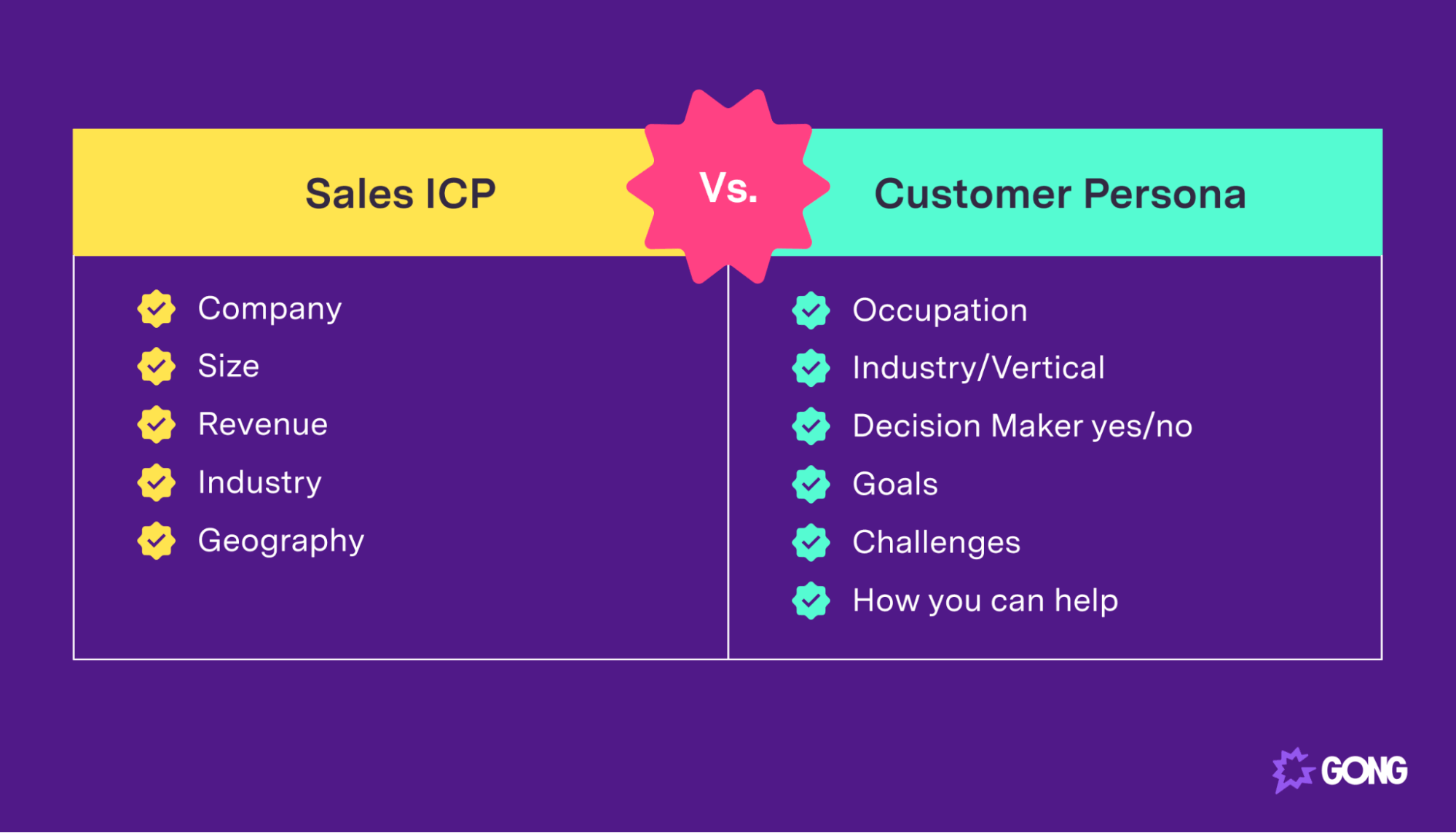
Sales enablement content is also important, especially since sales reps are using 48% more sales enablement content than in years past.
There are eight core types of sales enablement content your team should have:
- Blog posts and ebooks
- Product explainer videos
- Product sheets
- Case studies
- Sales battle cards
- Whitepapers
- Sales decks
- Email templates
Bonus points if you store this content in a centralized location that reps can access easily, even during a call!
Measure and improve performance in international sales
It can be more challenging to measure and improve sales performance in international markets, especially if you’ve just entered them. Follow these tips to make the process as easy as possible:
Switch up your performance metrics
It’s common for sales teams to have different goals in different markets. That means you likely need to use different metrics to gauge performance in different markets.
If you’ve just entered a new market, for example, you probably want reps to familiarize themselves with it by speaking to as many prospects as possible. In that case, it makes sense to track productivity-based metrics — like the number of calls made and meetings booked — instead of revenue-based metrics.
Create local benchmarks
Domestic benchmarks may not be suitable in international markets, so don’t set standards based on how your reps perform in your existing market(s). Instead, use a revenue intelligence platform to track your progress from day one in the new market, so you quickly assess what’s working and pivot to adjust as necessary.
Feel free to set some productivity-based quotas, but focus more on incentives and quotas once you understand the market’s reception to your new offering and the number of deals you can realistically close.
Relocate staff to rapidly improve performance
Avoid hiring a new sales team from scratch if you want to supercharge your sales performance in new markets. Relocate sales managers and some of your top performers to new markets to ensure that your existing sales process is implemented effectively — even if these employees only stay for six to 12 months.
You’ll still want to hire local sales professionals as they will have an intuitive understanding of your new market. Still, it pays dividends to have them trained by employees who have worked in your organization for years and who can reliably carry out your chosen sales methodology.
Get actionable insights into your sales performance with Gong
If you’re working on improving your team’s sales performance, make sure you engage in adequate training, clarify your sales processes, and invest in the right technology. The proportion of attention you give to each one will depend on your business’s unique needs, but you can rely on Gong in each of these three key areas.
Personalized coaching will be effortless thanks to Gong’s AI analytics, based on billions of customer interactions. Your managers will have complete visibility across their team’s pipeline and know exactly which skills reps need to improve. And Gong will also supercharge your team’s productivity by automating their time-consuming manual tasks and providing contextual suggestions on the next best action.
Book a Gong demo today to see insights and features that can maximize your team’s sales performance.

Director, Content Strategy and Research at Gong
For over a decade, Dan has provided revenue leaders with data and insights to inform and execute their GTM strategies. As a former analyst at Forrester Research, he worked with hundreds of B2B organizations to measure and improve sales productivity.
Discover more from Gong
Check out the latest product information, executive insights, and selling tips and tricks, all on the Gong blog.
